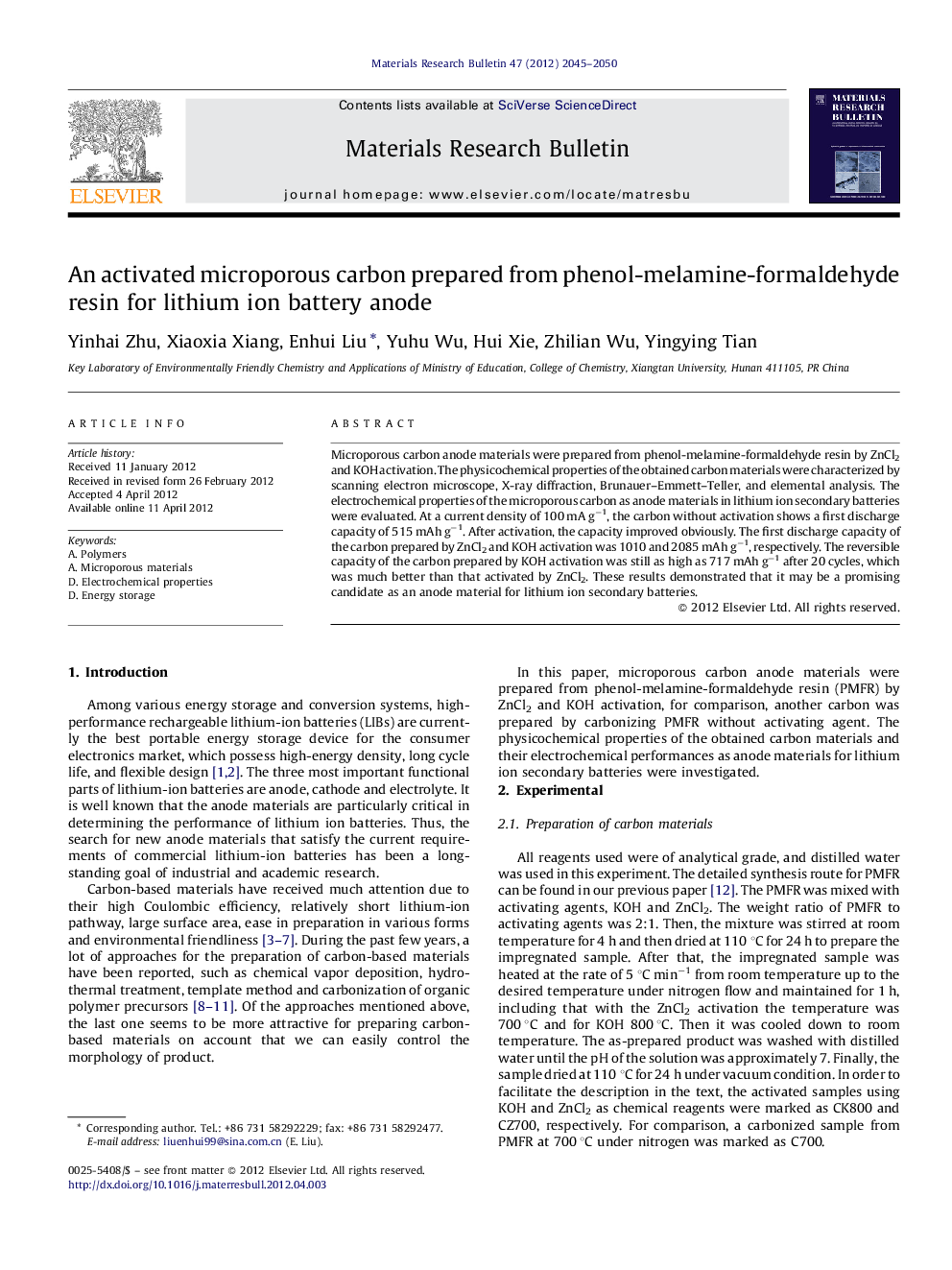| Article ID | Journal | Published Year | Pages | File Type |
|---|---|---|---|---|
| 1489985 | Materials Research Bulletin | 2012 | 6 Pages |
Microporous carbon anode materials were prepared from phenol-melamine-formaldehyde resin by ZnCl2 and KOH activation. The physicochemical properties of the obtained carbon materials were characterized by scanning electron microscope, X-ray diffraction, Brunauer–Emmett–Teller, and elemental analysis. The electrochemical properties of the microporous carbon as anode materials in lithium ion secondary batteries were evaluated. At a current density of 100 mA g−1, the carbon without activation shows a first discharge capacity of 515 mAh g−1. After activation, the capacity improved obviously. The first discharge capacity of the carbon prepared by ZnCl2 and KOH activation was 1010 and 2085 mAh g−1, respectively. The reversible capacity of the carbon prepared by KOH activation was still as high as 717 mAh g−1 after 20 cycles, which was much better than that activated by ZnCl2. These results demonstrated that it may be a promising candidate as an anode material for lithium ion secondary batteries.
Graphical abstractFigure optionsDownload full-size imageDownload as PowerPoint slideHighlights► Microporous carbon was prepared by chemical activation of phenol-melamine-formaldehyde resin. ► Activation leads to high surface area, well-developed micropores. ► Micropores lead to strong intercalation between carbon and lithium ion. ► Large surface area promotes to improve the lithium storage capacity.
